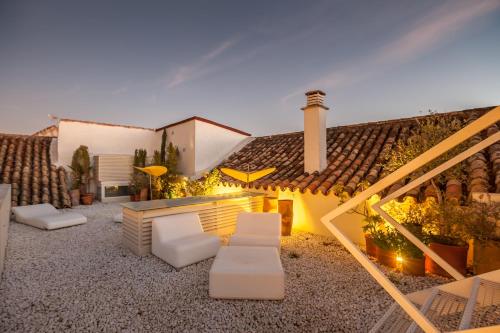At the foot of the Morena Mountains, on the banks of Guadalquivir River, lies Cordoba. Often overlooked, all you need is 1 day in Cordoba to explore the highlights that the city has to offer. In the past, Cordoba began as a Roman settlement and soon became the capital of the Ummayad Dynasty. Today, the city blends modern and ancient while retaining its charm.
The highlights of our trip include:
- Mosque-Cathedral of Cordoba
- Calleja de las Flores
- Alcazar of the Christian Monarchs
- Puerta del Puente
- Roman bridge of Cordoba
- Torre de Calahorra
Hola, Cordoba!
Disclaimer: Some of the links here are my affiliate links and I may earn if you click on them, at no extra cost to you. Please read my Disclaimer Policy for more information. I hope you find the information here helpful! Thank you!
Where is Cordoba?
South of the Iberian Peninsula, in a depression formed by the Guadalquivir River, lies Cordoba. The city is at the foot of the Morena Mountains and is about 80 miles from Seville. With a Mediterranean climate, the city has hot summers and mild winters.
What makes Cordoba worth visiting is the Mezquita-Catedral de Cordoba (or the Great Mosque of Cordoba). Cordoba is also the birthplace of Seneca the Younger, a Roman philosopher and tutor to Nero.
Besides tourism, the city is also known as a manufacturing hub for textiles. The city also produces traditional medieval handicrafts, gold, silver, copper, and bronze ornaments.
Related Posts:
History
The Neanderthal Man was the earliest human to have stepped foot on the Iberian Peninsula. The Carthaginian settlements were the earliest recorded dating back to the 1st century. By the 2nd century, the area was under Roman rule and by the 6th century, the city was under the Visigoths.
The Arab Conquest of Spain began in the 8th century. And under their rule, 21 suburbs developed along the city. By the 13th century, the city fell to Ferdinand III after a siege of several months. The Great Mosque became a Catholic cathedral. By the 16th century, the city prospered, only to see a decline in the 18th century.
With the arrival of rail transport in the 19th century, the city developed. There was growth in its population and the economy increased by the 20th century. Today, Cordoba is famous for its Roman, Islamic, and Christian architecture. Its bridges, gardens, and parks around the city add a dash of greenery to this historic city.
And, for fun, why not try finding the 10 statues of Archangel Raphael, the protector, and custodian of the city? Here’s a hint, one of his statues is at the Roman Bridge.
Visa Requirements
According to the Ministry of Foreign Affairs, citizens of the European Union, Iceland, Liechtenstein, Norway, and Switzerland and their family members may enter Spain using their national identity card or passport. The nationalities which require a visa to enter Spain are listed in the Official Journal of the European Union.
Schengen Visa
Spain is one of the member states and the second-largest country in the European Union with Madrid, Barcelona, Valencia, and Seville being the popular cities for tourism. That does not mean that you can’t spend 1 day in Cordoba. A Schengen Visa allows you to enter Spain and other member states of the European Union.
To apply for a Spanish Schengen Visa, you would need:
- A Spanish Visa Application Form
- Two Passport photos
- A valid passport
- Spanish travel health insurance
- Round-trip flight itinerary
- Proof of accommodation, and
- Proof of sufficient financial means
Alternatively, you could apply for a Spanish Visa using iVisa which has an easy and traveler-friendly visa application process, round-the-clock customer service, and secure and safe data centers with state-of-the-art security systems.
How Do You Get Around Cordoba
As this is a small city, most of its tourist sites are within the Historic City Center, except for Medina-Azahara which is on the outskirts of the city. The easiest way to get around Cordoba is by walking.
While the public transportation is reliable, the signages are in Spanish. Unlike Madrid or Barcelona, Spanish is widely spoken compared to English. Thus, having a basic understanding of spoken Spanish would be useful.
Walk
In your 1 day in Cordoba, you will cover the main tourist sites in the Historic City Center which is the Old Town of Cordoba. In this area, you can easily walk between sights with the walking time being less than 20 minutes. If you have time, you can walk to the Palacio Viana and the Plaza de la Corredera which are a 10-minute walk from the Alzacar of the Christian Monarchs.
Horse Carriage
While walking through the historical core of Cordoba, chances are you may see horse-drawn carriages. This is an easy alternative as you pass by the Alcazar, the banks of Guadalquivir, the Puerta del Puente, and end your tour at Mosque-Cathedral. The trip takes about 45 minutes to complete and although the prices start at €45 ($46), they can vary according to the seasons and time of day.
Bus
Buses are another cheap alternative to travel within the city. Do note that signages are in Spanish and that during peak hours, buses may be slower than a taxi or ride-share. Aucorsa is the only bus company that runs 15 lines throughout the city center and historic district.
Lines 3 and 5 links the bus and train stations while Line 12 makes a complete circle around the Jewish Quarter. Line 7 links the east and west side of the city while passing through the Jewish Quarter.
For tourists, ride on the Hop-On-Hop-Off Sightseeing Tour Bus which takes you to the 17 different stops throughout the city. Check out the Puerta de Sevilla, the towers and fortresses of Malmuerta, Belén, and Puerta del Rincón.
Taxi
The taxis here are rather unique as they are white with the municipal’s coat of arms as its livery. Although taxi drivers are supposed to display their prices inside the taxi, some drivers may not use them. The rates are calculated based on flag descent and mileage.
This makes a taxi an expensive option and is suitable for getting yourself to Medina-Azahara, a fortified palace city that is now a major archaeological site.
Ride-share
This is the most convenient way to get around the city as you do not have to wait long for your ride to arrive. The ride-shares that are available in Cordoba are Uber and Cabify.
Is One Day Enough in Cordoba?
As Cordoba is a small city, one day is enough to visit the city’s main attractions, although this may seem like a hectic and rushed trip. To comfortably visit the sights and absorb the sights and sounds of the city, you may need two days.
Mosque-Cathedral of Cordoba
The first of our 1 day in Cordoba is the Mosque-Cathedral of Cordoba or Cathedral of our Lady of the Assumption. The site was a Visigothic Church of St. Vincent.
What is striking is the Hypostyle Hall. This hall served as the prayer hall for Muslims during the reign of Abd Al-Rahman I and his successors. The hall has “countless pillars like rows of palm trees in the oases of Syria”.
What is unique about the Great Mosque of Cordoba?
The Great Mosque of Cordoba is unique in that it has a hall of striped columns. The Great Mosque also influenced the “Moorish” concept in the Western world.
What is the Mosque of Cordoba now?
Today, the Mosque of Cordoba is now the Cathedral of our Lady of the Assumption. The conversion from a mosque to a cathedral happened in 1236 when the mosque was captured by Christian forces during the Reconquista.
How much is the entry fee for the Great Mosque of Cordoba?
The entry fee for the Great Mosque of Cordoba is €11 ($11) for adults, €9 ($9) for youths and seniors above 65 years, and €6 ($6) for people with disabilities and children between 10 to 14 years old.
Calleja de las Flores
The second of our 1 day in Cordoba is Calleja de las Flores or Alley of the Flowers. This is a charming alley at the heart of the Jewish Quarter. And, it is an easy 3-minute walk which is approximately 230 meters from the Mosque-Cathedral of Cordoba.
The narrow alley has flowers hanging from balconies and iron grills. At the end of the alley, you will find yourself at a square with a fountain on one side and one of the bell towers of the Mosque-Cathedral on the other side.
Alcazar of the Christian Monarchs
The third of our 1 day in Cordoba is the Alcazar of the Christian Monarchs. This palace is about 800 meters or a 10-minute walk from Calleja de las Flores. The palace once served as the residence of Queen Isabella I of Castile and Ferdinand II of Aragon. The statue you see is that of the Christian Monarchs and Christopher Columbus.
The palace is historically significant as it was in this castle that Christopher Columbus had his first audience with Isabella and Ferdinand to gain support for his sea expeditions. Napoleon Bonaparte’s troops were also stationed here to protect the palace.
What is the Alcazar of the Christian Monarchs?
The Alcazar of the Christian Monarchs once served as a fortress and palatial residence to Isabella I of Castile and Ferdinand II of Aragon who were known as the Catholic Monarchs. The palace is also known for its sober exterior and beautiful interiors with splendid halls, courtyards, and baths.
When was Alcazar of the Christian Monarchs built?
The Alcazar of the Christian Monarchs was built by King Alfonso XI of Castile. King Alfonso only retained a part of it the castle’s original Moorish structure. The castle has four towers, courtyards, and reception halls.
Molino de la Albolafia
The fourth of our 1 day in Cordoba is the Molino de la Albolafia. The Mill of the Albolafia is about 260 meters or an easy 3-minute walk from the Alcazar of the Christian Monarchs. The purpose of the mill was to raise water from the river and into the aqueduct to be delivered to the city and palace.
Although the mill may have Roman origins, it was named after Abr-I Afiya who was responsible for improving the palace and gardens. The mill was dismantled on the orders of Queen Isabella who complained of the squeaking noise it made as she lay sick at her palace in Alcázar de Los Reyes Cristianos.
Puerta del Puente
The fifth of our 1 day in Cordoba is Puerta del Puente or “Gate of the Bridge” which is about 140 meters or an easy 2-minute walk from Molino de la Albolafia. The bridge was built in the 16th century to commemorate King Phillip II’s visit to Cordoba.
As with other structures in Cordoba, this gate was one of the many entrances of Roman Cordoba. This gate linked the Roman Bridge and formed part of the Via Augusta, which is an ancient route that connected Rome to Cádiz.
There is a permanent exhibition room that has an entrance fee of €1 ($1) with free entry for children below the age of 5 years. The exhibition illustrates the history of the monument and gives access to the balcony that has excellent city views.
Roman Bridge of Cordoba
The sixth of our 1 day in Cordoba is the Roman Bridge of Cordoba. This bridge is 15 meters or an easy 1-minute walk from Puerta del Puente. The bridge was once the city’s only bridge to cross the city and was originally built during the early 1st century.
Although the bridge was originally a wooden structure, it was the Moors who extended the bridge to the current design we see today. For Games of Thrones fans, this bridge was known as the Long Bridge of Volantis in Season 5 of that series.
Why was the Roman bridge of Cordoba built?
The Roman Bridge of Cordoba was built as it was part of an ancient commercial and military route, it protected the city against attacks from Peter the Cruel, and was the city’s bridge across the Guadalquivir River.
Torre de Calahorra
The seventh and last of our 1 day in Cordoba is the Torre de Calahorra. This tower is located at the end of the Roman Bridge. The tower was originally constructed as a defense structure during the Middle Ages.
However, the tower has since served as a prison and currently houses the Museo Vivo de al-Andalus or the Living Museum of Al-Andalus. Make sure to walk to the rooftop to enjoy the panoramic views of Cordoba.
How much is the entrance fee for Torre de Calahorra?
The entrance fee is €4.50 ($4.60) for adults and €3 ($3) for students, senior citizens, and teenagers. There is free entry for those below 8 years old.
What are the best places to stay in Cordoba?
We have chosen some of our best hotels to stay in Cordoba.
Patio del Posadero

Our first choice for a 1 day in Cordoba stay is Patio del Posadero. What we love about this 6-room boutique bed and breakfast is the friendly and personal attention of its Italian-Spanish owners, Lisa & José. Each of the six rooms is individually styled to reflect Cordoba.
All rooms come with a king-size bed and a pillow menu, free WiFi, a safety deposit box, and a hairdryer. Some positive reviews about this adults-only hotel include comfortable beds and an excellent location. Guests also loved the friendly and charming hosts, the peaceful setting, and the beautiful swimming pool on the terrace.
Other reviews mention the cool rooms despite the heat outside and the lovely homemade cakes and bakes from the hosts.
Balcón de Cordoba

Our second choice for a 1 day in Cordoba stay is Balcon de Cordoba Hotel. This 10-room is located in the historic old town of Cordoba and is mere walking distance to the Mosque-Cathedral, the Roman Bridge, and the Torre de Calahorra. What we loved about this hotel is how this 17th-century monastery was beautifully converted into a modern boutique hotel.
The hotel has traditional fountains, red-brick arches, and a cobbled geranium courtyard. It feels as if you are taken back in time when this was a monastery. The calm and peaceful ambiance combined with professional, personal, and efficient staff would make your stay here memorable. Some positive reviews mention the centrally located hotel, comfortable rooms, and helpful staff.
Guests also loved the rooms with private terraces and a wonderful rooftop terrace. Other reviews mention that although the rooms were small, the ambiance and the comfortable bed make up for the stay. Guests also loved the welcome drink which was a kind gesture.
Las Casas de la Judería

Our third choice for a 1 day in Cordoba stay is Las Casas de la Juderia. This 178-room hotel is spread out over 5 noble houses in the historic Jewish Quarter of Cordoba. This collection of 14th-century houses is marked by colored doors, from sky-blue to magenta.
While some rooms have terraces that look out to the courtyard, you can expect a traditional feel as the rooms are bright and spacious. You can expect the usual amenities with the Penthouse Patios having a terrace and a free minibar. Some positive reviews mention the excellent location, friendly staff, and pet-friendly hotel.
Other reviews say the comfortable bed, delicious breakfast, and that this was a beautiful old property at the center of the old town.
Hotel Viento 10

Our fourth choice for a 1 day in Cordoba stay is Hotel Viento 10. This 7-room hotel is in a 16th-century house with large windows and a mix of Andalusian, Moorish, and Roman styles. All rooms are breezy and open with whitewashed walls and separate seating areas with chaise-lounges and flat-screen television.
The bathrooms come with rainfall showers and designer toiletries. Some positive reviews mention that although the hotel is in a quiet location, it is close to bars and restaurants. Guests also loved that the rooms are clean, bright, spacious, and comfortable beds.
Hospes Palacio del Bailio

Our fifth and last choice for a 1 day in Cordoba stay is the Hospes Palacio del Bailio. This 53-room hotel sits on the site of the ruins of a 1st-century Roman villa. The hotel is an easy 15-minute walk to Cordoba’s old city. While you can view the ruins of the 1st-century villa from the atrium, the hotel beautifully combines contemporary design with a hint of traditional touch.
All rooms come with complimentary tea and coffee, bathrobes, twin sinks, hairdryers, and olive oil-infused toiletries. Some positive reviews mention the friendly and helpful staff as well as the perfect location of the hotel.
Guests also loved the relaxing pool area, the spacious and practical rooms as well as the delicious breakfast. Many of the guests would also love to return to this hotel.
Frequently Asked Questions on Cordoba
These are other frequently asked questions on Cordoba that you may have. We hope you find the information useful and helpful.
Cordoba is famous for being the only city in the world with the highest number of UNESCO World Heritage Sites. The city is also famous for its pristine Moorish-Christian architecture and Roman ruins.
Cordoba is a city in Andalusia, Spain. The city lies on the banks of the Guadalquivir River, south of the Iberian Peninsula. Besides being home to well-preserved Moorish, Christian, and Roman architecture, the city is also known for having the highest summer temperatures in Spain and Europe.
Yes, Cordoba is a walkable city. You can complete the tourist attractions within a day. You can either start at the Mosque-Cathedral or the Torre de Calahorra and explore the historic city center as given by our 1 day in Cordoba guide.
The language they speak in Cordoba is Spanish. Some basic greetings are hola for hello, Buenos Dias for good morning, Buenas Tardes for a good afternoon, and Buenas Noches for a good evening.
To get to Cordoba, the nearest airport to fly to is Seville Airport which is about 80 miles from Cordoba. The second closest airport is the Málaga-Costa del Sol Airport which is about 103 miles from Cordoba.
The best time to visit Cordoba is during the spring months of March, April, and May. During these months, the weather is pleasant, the days are sunny, and there isn’t much rainfall. The flowers bloom as nature comes back to life.
The summer months of June, July, and August are not the best times to visit Cordoba as the temperatures are high. In mid-June, you can experience the Noche Blanca del Flamenco, and by July, the city empties as the locals go on holiday.
The second best time to visit Cordoba is during the autumn months of October and November. During these months, the temperatures are mild with a few rainy days. These months are ideal for hiking and outdoor activities.
The winter months are from December, January, and February. During these months, a magical atmosphere envelops the city as Christmas nears. Christmas decorations and nativity scenes fill the street.
No, you do not need a car in Cordoba. This is because the city center is small and walkable. The city is safe to walk during the day and night.
Yes, there is an Uber in Cordoba. However, there are few drivers, so waiting times may be longer than usual. Alternatively, you can use Cabify to get around the city.
While Cordoba is not as popular as Seville or Granada, a trip here is an absolute must. Here’s why:
1) History. With centuries-old history and an amalgamation of cultures, from Roman to Muslim, the city has a unique blend of Moorish-Christian architecture that is unique to Cordoba.
2) Spanish sunshine. The city has a hot Mediterranean climate which makes it an (almost!) year-round destination. Cordoba has the highest summer temperatures in Spain and Europe with a high of 46.9°C (116.4°F).
3) Well-connected city. The city is about two hours from Seville, Granada, and Málaga. And, it is about 90 minutes away by train from Madrid. This makes the city a perfect day trip or a city that is a destination in its own right.
4) Culture, Art & People. With plenty of museums sprinkled with a dash of flamenco and a pinch of theatre, this is Cordoba. The city is also the birthplace of Seneca.
5) Nightlife. From Flamenco nights to dance till you drop, this city has a nightlife just as vibrant as any other city in Spain. Try bar hopping from tapas joints to Bar Santa Maria to Calle San Fernando.
With narrow winding streets, a Jewish quarter, and typical Moorish architecture, this city lies at the heart of Andalucia. Stay here for 1 day in Cordoba and soak in the charm of an ancient Medieval capital.




